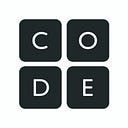How two Spanish teachers brought coding into their classrooms
With help from J Balvin and Willy William, the lesson was a big hit with students.
The 2021 theme for Hour of Code was #CSEverywhere, inviting teachers and students to explore the awesome relationship that computer science has with different subjects in school, different industries, and even different career paths. Code.org even provided an all-new curriculum — CS Connections — that helped teachers combine computer science with math, biology, and ELA.
But two teachers in Maryland created a lesson on their own that combined computer science with a more surprising subject: Spanish!
Caroline Schlegel and Aubrey Swisher teach Spanish at rival high schools in Washington County, Maryland — but the two are anything but rivals. They work together to develop lesson plans for themselves and for teachers around the world: As A/Cquisition, they develop free resources and guides for other Spanish teachers to use.
Obviously, they’re comfortable with getting creative — but how did computer science enter the mix? A month before last year’s Computer Science Education Week and the annual celebration of Hour of Code, one of the county’s EdTech coaches reached out to Caroline with some ideas for a cross-curricular exploration.
“Truthfully, I knew nothing, like ZERO, about coding prior to her coming into my room that day,” says Caroline. “I mean, I know what it is, right? But had no idea how to code, much less teach my students to do it.”
But Caroline and Aubrey were open to the idea and checked out Code.org, where they discovered that not only does the Dance Party activity have songs in Spanish, but entire activities can be translated into Spanish. (In fact, Code.org activities can be translated into 30 different languages!)
“My People” for my students
The duo came up with a week-long experience for their students centered around the song, “Mi Gente,” by J Balvin and Willy William. The activities incorporated movement, art, music, culture, technology, and the discovery of vocabulary through the study of lyrics — and it all concluded with a dance party!
“Students had the chance to listen to Spanish, read in Spanish, write in Spanish, discuss in Spanish, explore lyrics, make meaningful vocabulary connections through pictograms, share personal connections, dance, explore coding, create their own Code.org Dance Party, and watch the work of their classmates. There was something for literally everyone,” says Caroline.
“My students were so excited to sing, dance, and play,” she says. “As we watched the student-created Dance Party videos, we celebrated newly acquired skills and the fact that some students are so incredibly talented at coding. It was a chance for us to learn from each other, support each other, and celebrate each other.”
(Aubrey’s class hasn’t tried the activity just yet — they’re currently measuring proficiency levels and Aubrey’s saving the coding lesson for the end: “Testing can be a very rigorous and tiring experience. Code.org is the light at the end of the tunnel: I want to reward students with something refreshing and interactive while having them use their skillsets in a new way, and this lesson is going to be that opportunity!”)
But Caroline’s class loved every minute: “‘This is AWESOME’ was the general consensus,” she says.
Cross-curricular and cross-cultural connections
Aubrey has been teaching for 13 years, while Caroline’s been teaching for 15. Recently, they’ve been garnering some acclaim: They were selected as “Best of Maryland” by the Maryland Foreign Language Association and Caroline was named Washington County Public Schools’ Teacher of the Year for 2021–22.
They’re passionate about offering their students relevant content that broadens not only their proficiency in Spanish, but their knowledge of the world. They say this lesson combining Spanish and computer science fits the bill:
“Every day, I am aiming to provide them with learning opportunities and valuable experiences that will shape their knowledge, broaden their perspectives, and leave them with skills that they can apply today and any day in their futures,” says Aubrey.
“Incorporating an Hour of Code provides students with a unique learning experience that is so applicable to our present, and can still be done in the target language,” she says. “We are always looking for ways to actively engage students, create team-building and collaborative efforts, and further-develop 21st-century skills. Incorporating a computer science lesson into your own content area checks all of those boxes.”
Try it for yourself
Both of them would recommend that non-computer science teachers try to incorporate CS into their lessons where possible.
“I would definitely encourage other teachers to take a risk — try something different,” says Aubrey. “It is really neat to tap into coding through a course outside of computer science. Code.org will walk you through, so you just need to be willing to try!”
Caroline suggests curious teachers start by just checking out the Hour of Code activities on Code.org: “Code.org makes it effortless to see the purpose of each lesson and the connection to other content areas,” she says. “With a little bit of exploration and creativity, you can create unique, purposeful cross-curricular, interdisciplinary lessons for your students.”
You can check out Caroline and Aubrey’s lesson plan here — it includes links to all of the resources they created when creating the plan. (Even if you aren’t a Spanish teacher, reviewing the lesson plan can provide insights on how to include computer science activities in your own classroom!)
“Incorporating Code.org into Spanish lessons is a win-win,” says Aubrey. “Is it relevant? Definitely! Does it open doors? Yes! It’s a great way to foster creativity and curiosity.”
— Samantha Urban Tarrant, Code.org
